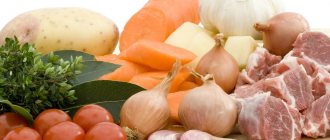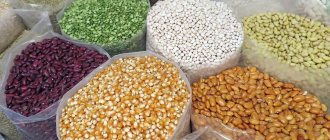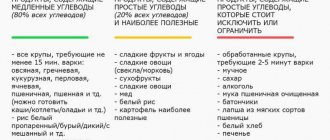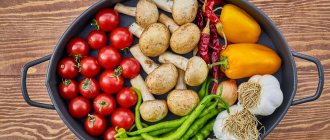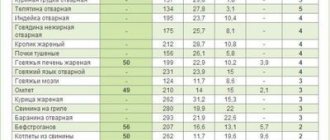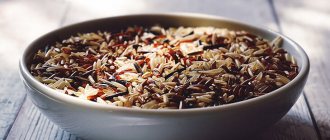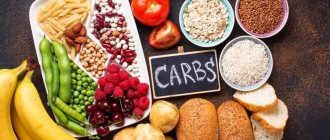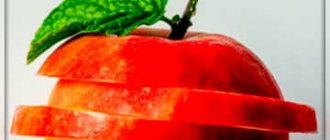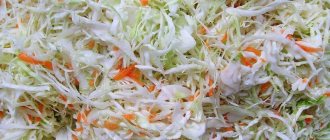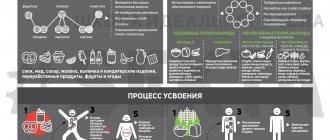The glycemic index (abbreviated as GI) is one of the key characteristics that helps divide foods into healthy and unhealthy. Foods with a low glycemic index are acceptable with proper nutrition, while foods with a high GI lead to excess weight gain.
In particular, regular and uncontrolled consumption of carbohydrate foods with a high glycemic index (the so-called “fast carbohydrates”) disrupts metabolic processes in the body, provoking the development of diabetes mellitus and associated obesity.
Cabbage GI
The glycemic index makes it possible to understand how blood sugar levels change due to the consumption of different foods. This allows you to adhere to proper nutrition and eliminate foods that provoke sudden jumps in glucose levels.
This method will provide an opportunity to avoid the development of complications in diabetics (due to damage to the walls of blood vessels against the background of constantly elevated glucose levels), and will allow people trying to lose weight to quickly reduce body weight.
The reason for the positive changes is a moderate increase in glucose levels. As a result, there is no excess glycogen production. The body uses energy correctly, which does not contribute to the formation of fat.
An increase in the glycemic index after eating is a consequence of the absorption and transformation of carbohydrates, which are subsequently converted into glucose. The higher this indicator, the more harm the food causes. The rate of glucose production depends on the type of carbohydrate. They are:
- simple;
- complex.
In the first case, the transformation of carbohydrates occurs rapidly, which is why the sugar level also increases. It is undesirable for even healthy people to consume such products, and they are generally contraindicated for diabetics. In the second case (when complex carbohydrates enter the body along with food), the process of hydrolysis begins. This releases simple compounds.
Transformation of polysaccharides occurs under the influence of enzymes. This process takes longer.
Accordingly, when eating food containing complex carbohydrates, the GI will not rise as rapidly as in the case of simple nutrients. Additionally, eating foods containing fiber, such as cabbage, reduces the rise in glucose. In this case, the absorption of carbohydrates is inhibited. Glucose levels are easier to keep under control.
By all indicators, cabbage is considered a dietary product. It is characterized by a low glycemic index. This indicator depends on the type of vegetable. Other factors that affect GI:
- degree of maturity: greenish fruits are characterized by a lower glycemic index;
- processing method: under the influence of high temperatures (when the dish is prepared), GI also increases;
- intensity of processing: the more food is crushed, the higher the glycemic index will be;
- cooking technology: steaming, boiling, frying, etc. (fresh vegetables are more healthy);
- storage duration;
- calorie content.
The last of the factors is the most controversial: not every product of high energy value contributes to an increase in GI. But in reality, high-calorie food affects the rate of transformation of carbohydrates, since it is determined by a number of parameters: the amount of fiber, the ratio of nutrients, vitamins, organic acids.
It is not recommended to consume it, even if the GI is low, as this will create conditions for weight gain.
However, among other vegetables, cabbage stands out due to its advantages:
- has low calorie content;
- contains a small amount of fats and carbohydrates, and this does not depend on the type of cabbage and the method of its preparation: the values of all these nutrients are within acceptable values in accordance with dietary nutrition.
The table shows the indicators of the main nutrients and calorie content of fresh cabbage of different types:
| Name | Calorie content, kcal | Proteins, g | Fats, g | Carbohydrates, g |
| White cabbage | 28 | 1,8 | 0,2 | 4,7 |
| Brussels | 35 | 4,8 | 0,3 | 3,1 |
| Beijing | 16 | 1,2 | 0,2 | 2,03 |
| Colored | 23 | 1,84 | 0,45 | 1,81 |
| Broccoli | 28 | 2,82 | 0,37 | 4,04 |
| Red cabbage | 24 | 0,8 | 0,2 | 5,1 |
| Kohlrabi | 42 | 2,8 | 0,1 | 7,9 |
During heat treatment, the properties of food change. Accordingly, after cooking, food can move from the dietary category to the more harmful category. In this case, cabbage is superior to other products. It remains useful even in finished form. For example, the calorie content of stewed cabbage (white cabbage) will increase from 28 to 75 units.
The glycemic index does not increase as sharply. The GI of stewed white cabbage will be 15 units. For comparison, this indicator for a fresh vegetable is 10 units. Its change after heat treatment is minimal.
To understand whether the glycemic index of stewed cabbage is sufficient, you need to study the classification of the parameter:
- low indicator - up to 40 units;
- medium - from 40 to 70 units;
- high - from 70 units.
The glycemic index of products is determined taking into account the reference value, which is the GI of glucose - 100 units.
Are you having trouble losing weight?
Answer 8 questions and find out why you can't lose weight.
Test for women
Test for men
How to determine GI
As a result of long scientific research, food products were divided into groups according to the level of glucose release: products with low GI - up to 30, with average - up to 70 and high GI - from 70 to 100. But it can immediately be noted that the Glycemic Index indicators are not related to the calorie content of the product.
It is also important to determine the Glycemic Load (GL) of a product, which determines how much insulin the body will need to produce to absorb a particular product. Its indicators can be calculated using the formula:
Sea, color, white, Beijing
These varieties of cabbage differ in their set of beneficial properties, but act on the body in almost the same way. So, they are all characterized by a low GI index. As a result, there are no restrictions on the consumption of vegetables of different varieties. The GI of white cabbage is the lowest - 10 units. For comparison, this figure for other types of vegetables is not much higher than the indicated value. And some varieties have the same GI index as cabbage. For example, the level of absorption of carbohydrates in some varieties of vegetables varies in the following values:
- seaweed - 22 units;
- Beijing - 15 units.
- Brussels sprouts - 15 units;
- colored - 15 units.
When comparing the characteristics of different products, pay attention not only to the GI, but also to the insulin level. The rate of insulin response (IR) of the body is assessed as carbohydrates are absorbed after a meal. That is, GI is related to AI. These indicators create a glycemic load (GL) on the body.
If the product index in question is low (as with the listed options), the intensity of insulin production should also be taken into account. This hormone is responsible for glucose transport. If it is not enough or it does not function properly, a pathological process develops in which the sugar level increases. The glycemic load can be influenced by various factors, for example, a combination of nutrients and foods. Options for changing GN under various conditions:
- the introduction of unsaturated fats into the diet along with carbohydrates increases GN, but such compounds themselves cause less harm;
- Proteins and carbohydrates together help increase insulin response;
- Olive oil acts neutrally, butter provokes a sharp jump in AI;
- if proteins are combined with foods characterized by high GI, an increase in insulin response occurs, the same is observed when fats are combined with such foods.
In order to simultaneously normalize the glycemic load, insulin response, and GI, foods containing a large amount of dietary fiber, such as cabbage, are introduced into the diet.
(Glycemic Index amount of carbohydrates, g) 100
This parameter is especially important when creating a diet for diabetics who need to control the level of insulin in the blood.
Special tables of products with classification of glycemic indices and Glycemic Load have been created. But such tables are not always at hand. Therefore, GI can be determined by the following indicators:
- The presence of milk in the product. Milk and milk-containing products contain milk sugar, so the glycemic index of these products increases.
- Method of preparation and processing of products. Identical products with different heat treatment and cooking methods have different GI. Also, the smaller the final product, the higher its GI (boiled potatoes and mashed potatoes)
- Time to satiation after eating carbohydrates. Processing complex carbohydrates requires more time and energy consumption from the body, and the release of glucose into the blood occurs more slowly. Therefore, the feeling of satiety does not leave longer. Such carbohydrate-containing products can be classified as low GI products.
- Experienced way. You can track the degree and duration of saturation and your well-being. Rely on information about proper and healthy nutrition.
Tables with indicators of the Glycemic Index and Glycemic Load are very convenient for creating a diet for people with type 1 and type 2 diabetes. And for healthy people, based on the indicators in the tables, it will be necessary to give up completely safe and familiar foods.
But the increased GI of a product is not a reason to refuse it. It is enough just to reduce the consumption of “empty” carbohydrates that do not benefit the body, and also know when to stop, then there will be no problems with health and excess weight.
ONLINE REGISTRATION at the DIANA clinic
You can make an appointment by calling the toll-free phone number 8-800-707-15-60 or filling out the contact form. In this case, we will contact you ourselves.
Beneficial features
Small cabbage in a bowl
In addition to a significant amount of vitamin C, cabbage contains valuable vitamins U and K. In addition to them, the vegetable includes vitamins B, E, niacin, rutin, and biotin.
The almost complete absence of starch and high dietary fiber content perfectly regulate metabolism and fight obesity. Large amounts of calcium, magnesium, phosphorus, iron saturate the body with useful minerals. When sauerkraut is fermented, the vitamin C content increases many times over, which makes it indispensable in the fight against scurvy.
The effects of alcohol intoxication can be relieved by drinking cabbage juice. Harmful substances are absorbed by fiber like a sponge.
For chronic fatigue syndrome, Brussels sprouts significantly improve immunity. The Chinese consider Chinese cabbage to be a guarantee of longevity. It is recommended for schoolchildren and students to eat cabbage as often as possible.
This vegetable takes first place not only in the kitchen. In folk medicine, cabbage is widely used in the treatment of many diseases. Cabbage juice is widely used to treat gastrointestinal diseases and apply compresses to wounds and bruises.
Stewed, pickled, boiled, fried
Unlike many other products, cabbage retains most of the nutrients during heat treatment: vitamins C, E, P, K, PP, group B (including biotin). Dietary fiber is also preserved, which partly helps to reduce the rate of glucose production. Thanks to these properties, stewed cabbage can be included in the diet for diabetes. It benefits many if there are no contraindications (for example, gastrointestinal function is impaired).
Cabbage helps maintain body weight at the same level. It is also used in cases where you need to lose excess weight. Due to these properties, this vegetable is often included in the diet menu. For diabetes mellitus, stewed cabbage is also allowed. However, unlimited consumption of any foods that increase sugar levels is not recommended, even if their glycemic index is low. But there are no strict restrictions. Cabbage is consumed in moderation.
When combining products, the properties of the dish change. If you plan to cook cabbage with onions, you need to know the GI of each component or cooked food in order to understand how quickly the sugar level will rise in this case. Stewed cabbage with onions requires more significant restrictions. It is difficult to accurately determine its glycemic index, but take into account that the GI of onions is also 15 units. But in combination with cabbage (with the addition of tomato paste) you get a product that does not belong to the dietary category.
Other types of cabbage have a low GI, provided the vegetables are minimally processed. For example, the index of sauerkraut is 15 units. In this case, the dish is prepared without adding oil or spices. This allows you to introduce it into the diet for diabetes mellitus for the purpose of losing weight.
Boiled vegetable products are almost always characterized by a high index (for example, carrots, beets). However, in the case of cabbage, this rule does not apply. The GI of a cooked vegetable is 15 units. If you cook cabbage for a short time, more nutrients will be retained. The GI will also be lower. In this form, the vegetable can be consumed by everyone: diabetics, overweight people, athletes.
Fried food is superior in index to boiled and stewed food. The GI of cabbage prepared this way is low.
But it belongs to the upper limit of the range of acceptable values. The indicator is 35 units. (if cauliflower is considered). However, even in this case, the product does not contribute to a sharp increase in glucose levels. But in case of diabetes mellitus, it is introduced into the diet carefully; it is recommended to limit the amount of fried cabbage and take long breaks between meals of such food.
